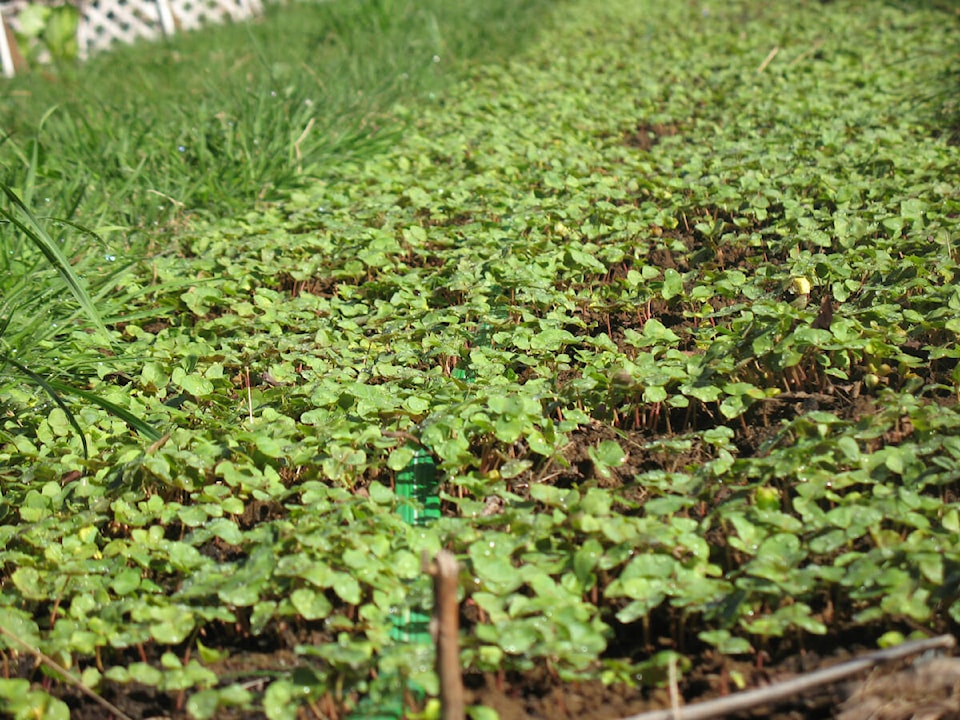By Mary Lowther
Some gardening experts recommend that we never leave soil bare, even for a few weeks, arguing that we should take every opportunity to replenish soil nutrients with a cover crop destined to be dug into the soil or added to the compost heap. We should eat nothing from this crop, even if it’s peas or beans, because nitrogen sequesters in these seeds and won’t be added to the soil if we remove them. Who am I to argue with what works?
Cover crops, like vegetables, have been developed to grow in specific seasons, so for summer coverage, we sow buckwheat that germinates quickly and tolerates heat well, but dies off in winter. I’m sowing buckwheat on every bed not filled with vegetables, and will allow it to flower for the bees before I dig it under and sow a fall or winter cover crop.
Phaecelia makes a great cover crop and begins flowering mid spring to attract bees. It’s quite expensive, so three years ago I bought a small packet of seeds that I’ve been continuing to grow out, collecting resulting seeds, and this year I have enough for two beds. I’ll sow fava beans and field peas in another bed or two, vetch or crimson clover in some and the rest with winter/fall rye. I won’t sow them all together as I have in the past, timing each crop to flower to attract bees next spring before I dig them under. I also want to cut down the rye when it’s about three to four feet tall and use the stalks for mulch, as gardening author Dick Raymond recommends in his book, Joy of Gardening.
Favas, vetch, crimson clover and field peas contribute nitrogen to the soil, while grasses like rye and wheat fill the soil with masses of roots that die off when the stalks are cut down, adding their own nutrients to the soil as well as retaining nutrients already there. It’s important to keep nutrients from the tops as well by digging them in or tossing them into the compost.
I’ve learned the hard way to protect newly sown beds from hungry birds who dig up every last seed, even through cloth laid on the ground.
In previous years they have burrowed under and/or pecked holes completely through my Reemay! Now I hammer one foot lengths of half inch rebar into both sides of the bed, slip hoops of electromagnetic tubing (EMT) over the rebar, drape the cloth or netting over this and batten down the edges. EMT is light and easy to bend. I bought mine from the hardware store, cut it into six foot lengths with a hack saw, rented a bender in Duncan and bent the tubes in the parking lot.
Even after all this, a determined avian sometimes muscles its way in, forgets how to get out and gets trapped inside. I have frequently seen my perplexed and very frustrated cat sitting outside such a tunnel, trying to get in while the bird tried to get out. Rumour has it we are smarter than mere birdbrains, but they are very determined and have us outnumbered. Ogden Nash wrote:
“The hunter crouches in his blind ‘neath camouflage of every kind,
And conjures up a quacking noise to lend allure to his decoys.
This grown-up man, with pluck and luck is hoping to outwit a duck.”
Like most satirists, Nash was a pessimist who failed to understand how important it is we win our battle with the avian hordes.
Please contact mary_lowther@yahoo.ca with questions and suggestions since I need all the help I can get.
